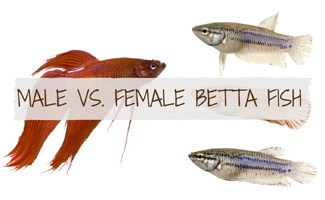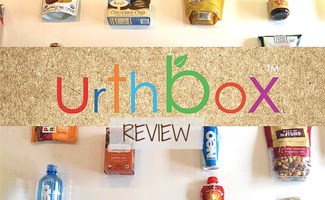How To Make A Wildlife Garden: Replenish Animals’ Natural Habitats
 With natural habitats for all types of animals disappearing at alarming rates, you can do your part by creating a thriving ecosystem right in your own backyard. Building a wildlife garden is easier than you might think, and before you know it, you’ll be giving a host of insects, birds, frogs, worms and other animals a place to call home. It’s also an excellent ongoing project for you to do as a family — and a fantastic teaching experience for your kids.
With natural habitats for all types of animals disappearing at alarming rates, you can do your part by creating a thriving ecosystem right in your own backyard. Building a wildlife garden is easier than you might think, and before you know it, you’ll be giving a host of insects, birds, frogs, worms and other animals a place to call home. It’s also an excellent ongoing project for you to do as a family — and a fantastic teaching experience for your kids.
Article Overview
- Key Elements
- The Need For Insect-Friendly Gardens
- Best Wildlife-Friendly Plants
- Other Tips
- How To Maintain A Sustainable Garden
Key Elements For A Wildlife Garden
The key to attracting wildlife to your garden is biodiversity. Avid gardeners already think about growing a diverse variety of plants, groundcovers, shrubs and trees, so the next step is to consider how the plants and other elements you incorporate into your garden provide food and shelter for wildlife. There are 4 main elements to consider when planning a wildlife garden: food, water, shelter and a breeding ground.
1. Food Sources
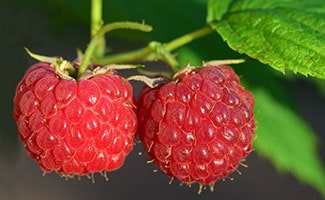 Plants provide food sources such as nectar, pollen, seeds, fruits, berries, nuts and foliage. And insects attracted to your garden are an essential food source for a variety of wildlife. You can also add bird, hummingbird, butterfly and other types of feeders to supplement the natural food sources in your garden.
Plants provide food sources such as nectar, pollen, seeds, fruits, berries, nuts and foliage. And insects attracted to your garden are an essential food source for a variety of wildlife. You can also add bird, hummingbird, butterfly and other types of feeders to supplement the natural food sources in your garden.
2. Water Sources
Water is an essential element for all animals to survive, and some need it for bathing or breeding. If you already live on a stream or other body of water, you’re in luck! But there are several ways you can provide water for insects and other wildlife. You can simply bury a bucket or trough in the ground or buy a birdbath. Of course, you’ll have to replenish the water supply regularly when it doesn’t rain.
Consider Building A Pond
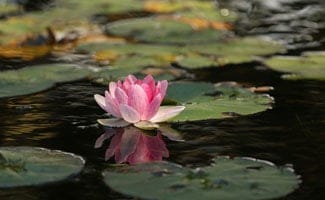 The ideal wildlife water source is a pond, and bigger is generally better if your goal is to promote biodiversity and sustainability. Larger ponds support a broader range of wildlife and foster a more self-sustaining ecosystem. A home pond can attract such diverse animals as birds, turtles, frogs, snakes, lizards and many others. They’re also an excellent habitat for dragonflies and other water-based insects whose populations are shrinking.
The ideal wildlife water source is a pond, and bigger is generally better if your goal is to promote biodiversity and sustainability. Larger ponds support a broader range of wildlife and foster a more self-sustaining ecosystem. A home pond can attract such diverse animals as birds, turtles, frogs, snakes, lizards and many others. They’re also an excellent habitat for dragonflies and other water-based insects whose populations are shrinking.
It’s best to fill your pond with unchlorinated rainwater and make sure you include stones and branches to give wildlife ways to access your pond. Waterlilies can help prevent it from becoming stagnant, or you can purchase a water pump. It’s also best to place it in an area that gets partial sun, rather than in full sun or full shade. These steps will also help to reduce mosquitoes that are attracted by stagnant waters.
You can often find DIY pond kits at a local garden center or buy one online. This Koolscapes 270 Gallon Pond Kit comes with everything you’ll need to build a small pond in your yard, including a non-toxic pond liner, filter-free pump, fountain heads and low lighting.
3. Natural Shelters
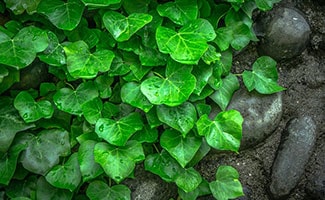 All kinds of wildlife need places to find shelter from bad weather and predators. Other than wooded areas and mature trees that you may already have in your yard, other great sources of cover for animals can include evergreen shrubs, dense bushes, thick ivy and tall grasses. Place piles of rocks, twigs, logs and rotting wood in your garden, which creates a fantastic shelter for many kinds of spiders and insects, including ants and beetles.
All kinds of wildlife need places to find shelter from bad weather and predators. Other than wooded areas and mature trees that you may already have in your yard, other great sources of cover for animals can include evergreen shrubs, dense bushes, thick ivy and tall grasses. Place piles of rocks, twigs, logs and rotting wood in your garden, which creates a fantastic shelter for many kinds of spiders and insects, including ants and beetles.
4. Breeding Areas
All kinds of wildlife require natural areas where they can mate, bear and raise their young to keep their species going. In a habitat garden, these can include mature trees, dense shrubs, tall grasses, water and dead trees or branches. Placing nesting boxes around your garden can give birds the shelter they need to build their nests and raise their young.
The Need For Insect-Friendly Gardens
A recent study published in the journal Biological Conservation found that insects such as bees, ants and beetles are disappearing 8 times faster than mammals, birds or reptiles and that 40% of insect species may become extinct over the next few decades. Major causes for this alarming decline include intensive agriculture, the use of pesticides and climate change.1
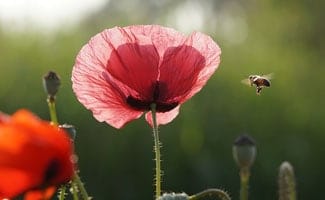 Insects are a vital part of our ecosystems, and it’s crucial for all of us to provide natural habitats where they can thrive. It’s best to incorporate plants, grasses and groundcover that are native to your area in your wildlife garden since these are the plants your area’s insects have thrived on for thousands of years.
Insects are a vital part of our ecosystems, and it’s crucial for all of us to provide natural habitats where they can thrive. It’s best to incorporate plants, grasses and groundcover that are native to your area in your wildlife garden since these are the plants your area’s insects have thrived on for thousands of years.
It’s also important to have a variety of different plants, so you have nectar, seeds, pollen and other food sources available throughout the seasons. The National Wildlife Foundation has an excellent online native plant finder, where you can search for all sorts of plants for your area.
You don’t even need a large yard to create an insect-friendly garden — you can use window boxes or planters on a rooftop area to give insects the plants they so desperately need.
How To Make A Bee-Friendly Garden
Bees and other pollinators collect pollen from the same source until it’s depleted, so it’s important to spread out your blooms from early spring to late autumn (and into winter, if possible). Choose plants that flower for a longer period of time and have single open flowers that are easier for them to access.
Make sure the plants you purchase haven’t been grown with any synthetic pesticides — this is always important but even more so with pollen-producing plants.
You can even place one or more mason bee houses in your wildlife garden. This Kigaba Handmade Natural Bamboo Mason Bee Hive has 70 nesting tubes to provide shelter for all kinds of bees in your yard. And if you’re up for a challenge, why not consider raising bees in your wildlife garden? Read our beginner’s beekeeping guide to learn how to get started.
Wildlife-Friendly Plants
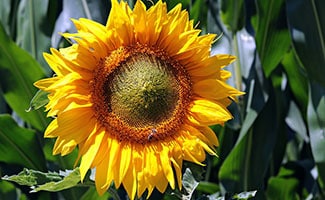 Be sure to add a wide variety of food-producing plants, shrubs and trees to your garden to give insects, birds and other wildlife a year-long feast. Here are some food-producing plants that are hardy in many areas of the U.S.
Be sure to add a wide variety of food-producing plants, shrubs and trees to your garden to give insects, birds and other wildlife a year-long feast. Here are some food-producing plants that are hardy in many areas of the U.S.
Berries: Bayberry, blueberry, dogwood, elderberry, grape, high-bush cranberry, holly, mulberry, pokeberry, raspberry and Virginia creeper
Nectar: Azalea, columbine, fuchsia, honeysuckle, joe-pye weed, lobelia, monarda, penstemon and trumpet vine
Nuts: Buckeye, chestnut and hickory
Seeds: Aster, goldenrod, grass, fir, pine, spruce, sunflower and thistle
Editor’s Pick
Don’t have a huge budget for plants? You can attract a ton of wildlife with a variety of wildflowers. This package of 30,000 non-GMO wildflower seeds can give your wildlife garden a great start at a low price of $9.99 ($4.76 / Ounce) .
Other Tips For A Healthy Garden Habitat
- Grass: Try to keep an area of your lawn uncut if possible. Many insect species, like butterflies, thrive with tall grasses and wildflowers.
- Weeds: Try to avoid killing weeds. They’re an important source of food for many insects, including butterflies and moths. They’re often heartier than other flowering plants you may have planted in your yard so they can provide food sources when others are absent.
- Flowering Plants: When the weather turns colder, wait until the next spring to deadhead your garden’s flowers. They can still provide seeds for wildlife to eat during the winter months.
- Compost: Keeping a compost heap will naturally enrich your soil and provide a habitat for worms, beetles and many other insects. If you’d prefer to compost in a self-contained bin, we have some compost bin recommendations for you.
- Fencing: If you have fencing in your yard, make sure there are some gaps in the bottom so small wildlife like frogs, rabbits and field mice can enjoy your wildlife garden.
How To Maintain A Sustainable Garden
How you manage your garden affects the health of the soil, water, air and overall habitat for native wildlife as well as humans. Don’t use chemicals, herbicides and pesticides in your yard — they can create a dangerous environment for many wildlife species. But to boost the growth of your grass, plants, bushes and trees, you can safely use organic fertilizer.
Conserving water is another factor when you have a large garden. Consider using a rain barrel system to keep your garden watered in the most sustainable way. You can even use rainwater collection for laundry, bathing and other smart uses.
What features do you want your wildlife garden to have?
Source: [1] BBC


